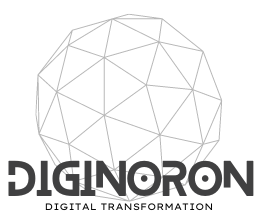The rapid growth of digital businesses has necessitated a corresponding evolution in human resources. Smart HR, or digital HR, leverages technology to streamline HR processes, enhance efficiency, and elevate the employee experience. This article delves into the benefits, challenges, and implementation strategies of smart HR in digital organizations
Benefits of smart human resources

Smart HR offers numerous advantages for digital businesses:
- Increased Efficiency: Automation of routine tasks and data-driven insights optimize HR operations.
- Enhanced Employee Experience: Self-service platforms empower employees, improving satisfaction and engagement.
- Data-Driven Decision Making: Leveraging HR analytics informs strategic decisions about talent management.
- Cost Reduction: Streamlined processes and automated tasks contribute to lower HR expenses.
- Improved Agility: Smart HR enables organizations to adapt quickly to changing business needs.
Challenges of Smart human resources
Implementing smart HR is not without its hurdles:
- Cost: Investing in HR technology can be significant.
- Data Security: Protecting sensitive employee information is paramount.
- Culture Change: Shifting to a technology-driven HR function requires organizational adjustment.
- Resistance to Change: Overcoming employee resistance to new tools and processes is essential.
Implementing Smart human resources
Successful smart HR implementation involves several key steps:
- Develop a Clear Strategy: Define specific HR goals and objectives to guide technology selection.
- Choose the Right Technology: Select software and tools aligned with organizational needs and budget.
- Train Employees: Provide comprehensive training to ensure effective technology adoption.
- Foster a Digital Culture: Cultivate an environment that embraces technology and innovation.
- Prioritize Data Security: Implement robust security measures to safeguard employee information.
Smart Human Resources Infrastructures: Building the Foundation for Digital HR
The evolution of human resources has been significantly influenced by technological advancements. The emergence of smart HR has transformed traditional HR functions into data-driven, efficient, and employee-centric operations. At the core of this transformation lies a robust HR infrastructure.
A smart HR infrastructure is more than just a collection of HR tools and systems. It’s a carefully designed framework that integrates technology, data, processes, and people to support the strategic goals of an organization. It encompasses everything from employee data management and talent acquisition to performance management and employee experience.
Key Components of a Smart human resources Infrastructure
- Data Management and Analytics: A solid HR infrastructure begins with effective data management. This includes collecting, storing, and analyzing employee data to extract valuable insights. Advanced analytics tools can help identify trends, predict workforce needs, and optimize HR strategies.
- Cloud-Based HR Systems: Cloud technology offers scalability, flexibility, and accessibility. Cloud-based HR systems provide a centralized platform for managing employee information, payroll, benefits, and other HR functions.
- Talent Acquisition Technology: To attract and hire top talent, organizations need robust recruitment tools. Applicant tracking systems, talent management platforms, and social recruiting tools are essential components of a smart HR infrastructure.
- Employee Self-Service Portals: Empowering employees with self-service capabilities improves efficiency and satisfaction. Employee portals should provide access to HR information, benefits, time-off requests, and performance reviews.
- Performance Management Systems: Effective performance management is crucial for employee development and organizational success. Performance management systems should align with business objectives and provide tools for goal setting, feedback, and performance reviews.
- Learning Management Systems (LMS): Continuous learning is essential for employee growth and organizational competitiveness. LMS platforms deliver training content, track employee progress, and facilitate knowledge sharing.
- HR Analytics and Business Intelligence: To make data-driven decisions, organizations need HR analytics tools. These tools provide insights into workforce trends, employee engagement, and talent management effectiveness.
- Integration and Interoperability: A seamless integration of HR systems and other enterprise applications is crucial for data consistency and efficiency. Open APIs and standardized data formats facilitate data exchange.
Benefits of a Smart human resources Infrastructure
- Improved Efficiency: Automation of HR processes and data-driven decision-making lead to increased efficiency and productivity.
- Enhanced Employee Experience: Self-service portals, personalized communication, and streamlined processes contribute to a positive employee experience.
- Data-Driven Insights: HR analytics provide valuable insights into workforce trends, talent gaps, and employee performance.
- Strategic Decision Making: Data-driven insights support informed decision-making related to talent management, workforce planning, and organizational strategy.
- Cost Reduction: Automation and optimization of HR processes can lead to significant cost savings.
- Risk Mitigation: Robust data security and compliance measures protect sensitive employee information.
Building a smart HR infrastructure is an ongoing process that requires careful planning, investment, and continuous improvement. By investing in the right technology, data management practices, and employee engagement strategies, organizations can create a solid foundation for HR success in the digital age.
Smart human resources for Startups
Startups can benefit greatly from smart human resources by following these steps:
- Identify HR Needs: Assess HR challenges and opportunities to determine technology requirements.
- Select Appropriate Solutions: Choose cost-effective and user-friendly HR tools.
- Integrate with Existing Systems: Ensure seamless data flow between HR systems.
- Provide Employee Training: Equip employees with the skills to use new HR technology.
- Measure and Analyze: Track HR metrics to evaluate the impact of smart HR initiatives.
Key Considerations
Beyond implementation, organizations must prioritize:
- Data Security: Protect employee data from unauthorized access.
- Regulatory Compliance: Adhere to relevant privacy and labor laws.
- Ethical Use of Data: Employ HR data responsibly and transparently.
Conclusion
Smart human resources is a strategic imperative for digital businesses seeking to thrive in a competitive landscape. By overcoming challenges and leveraging technology effectively, organizations can unlock significant benefits and achieve long-term success.


